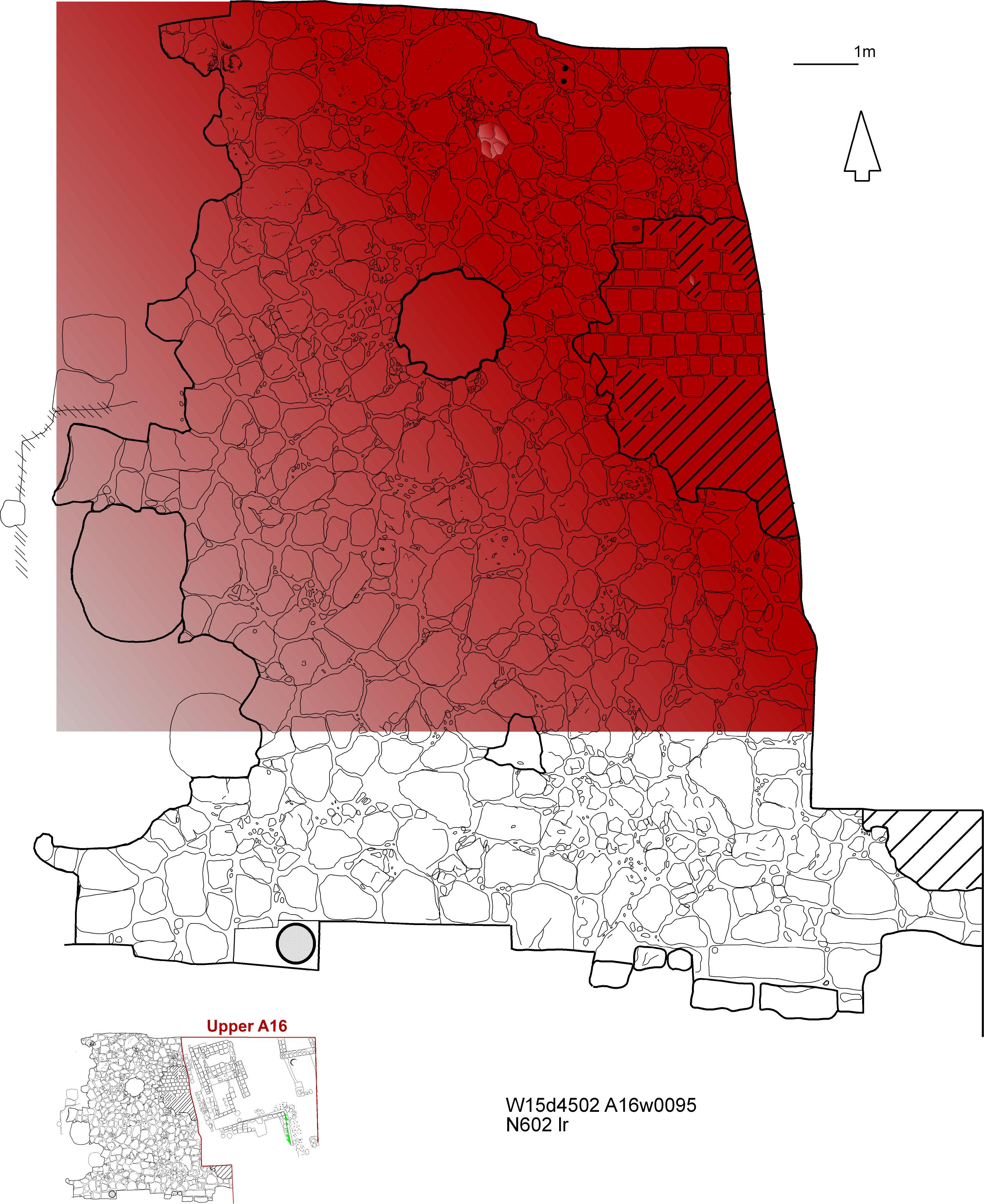Back to top: Phase 5cAAH within unit A16
Current version
This page was previously labeled Phase 4aAAC and was attributed according the AAC strata sequence. In June 2016, C. Chaves Yates revised all strata and phase information to match the updated AAH strata sequence. This page is current as of June 2016.
Back to top: Phase 5cAAH within unit A16
Overview
Phase 5 marks the new, post palatine occupation of the area. There are two main sub-phases (Phase 5cAAH and Phase 5hAAH.
The first is the covering of the courtyard, presumably resulting from the collapse of the Palace walls to the East. No attempt is made at reclaiming the courtyard.
The second represents the full transition to outdoor accumulations, presumably coming from a residential area to the north.
Back to top: Phase 5cAAH within unit A16
Collapse of Palace walls
We assume that the red material a27 reflects a collapse of the Palace walls to the east and northeast of the courtyard.
There is a typological correlation between this deposit and the one at the bottom of the sounding in A19, and since the elevation is also the same, we assume that they reflect the same event at the two opposite ends of the Palace.

Back to top: Phase 5cAAH within unit A16
Objects
Some sealings have been found in the collapsed material (i136, i141, q732.1) but some (i135) date to phase 4. In fact the material belong to phase 4, while the collapse itself happened during phase 5. Moreover we need to remember the presence of several later pits (phase 5h and phase 6) that could disturb the context. Other significative objects like i80 (zoomorphic vessel), i137 (bovis bronze head) or q603.1 (bronze pin) do not show any specific element of phase 5.
Back to top: Phase 5cAAH within unit A16